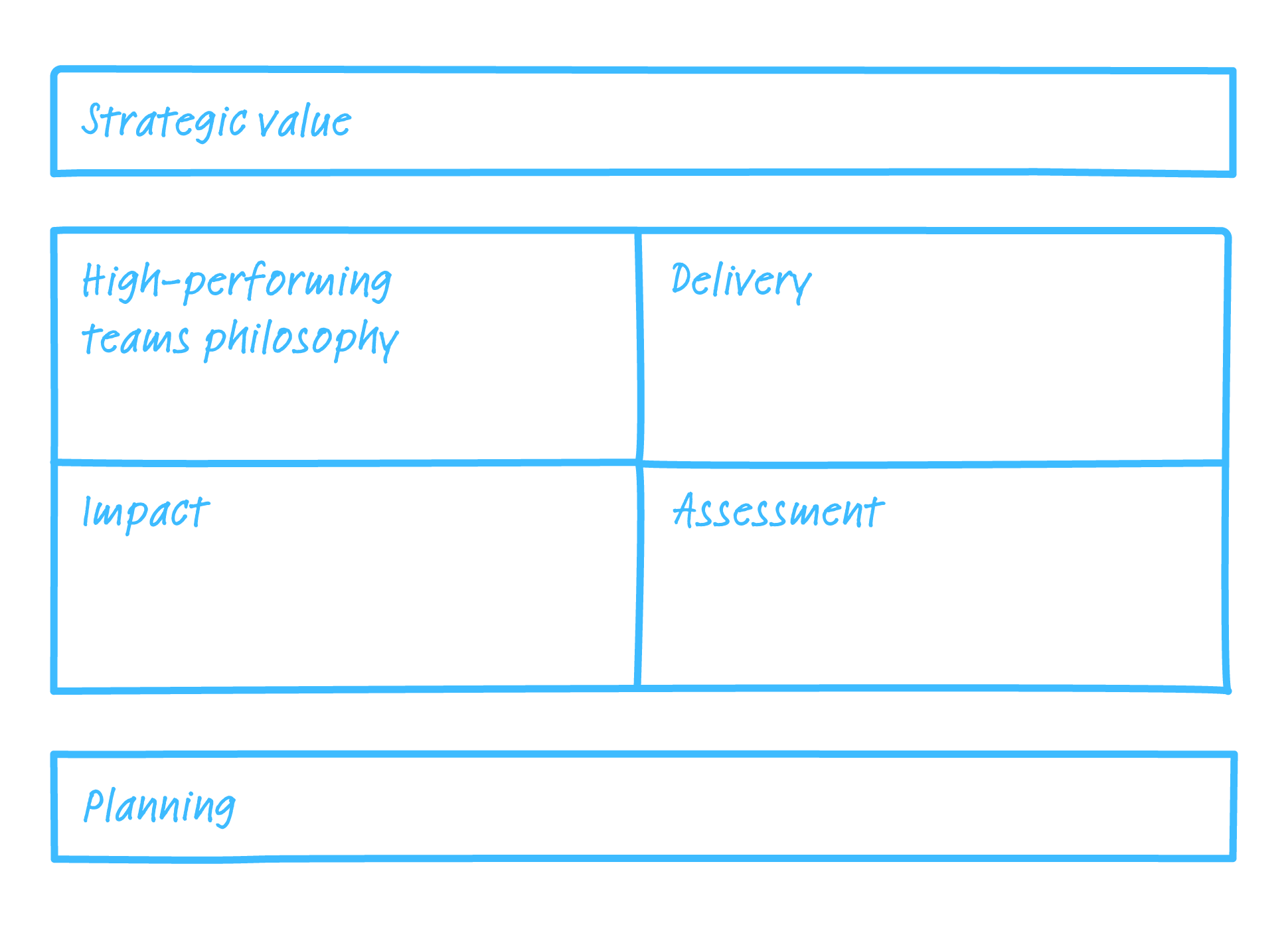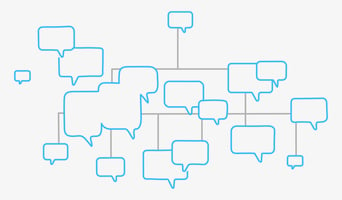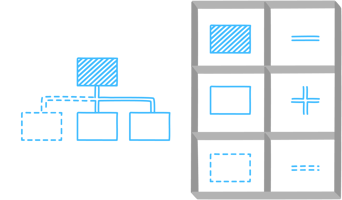Team effectiveness is a key driver of organizational performance at scale. We discuss the central questions that you’ll need to answer when designing a team effectiveness program spanning a larger organization.
Teams are the smallest organizational units. They dominate how an organization is experienced by its members. Teams are where the culture of an organization is playing out - and where it is shaped through everyday interactions.
No wonder then that team effectiveness programs are the weapon of choice for many senior leaders and their org developers when they want to improve organizational performance at scale.
Here we want to share our experiences of the crucial questions that will decide whether your program proves to be effective. Helping you find answers to these questions is what our Team Kit has been designed for.
-
What is the link between your enterprise strategy and your team effectiveness work?
-
Are you clear on the high-performing team concept and the key priorities you want to address?
-
Have you defined how you will engage (which) teams and deliver your program?
-
How will you make sure your program has a lasting impact (and is not just a flash in the pan)?
-
Is there a clear and shared understanding of how the team effectiveness program will be assessed?
-
Is there a robust time and resource planning in place?
Effective teamwork at scale - a framework for building effective teams
Having discussed the success factors of such programs with users of our Team Kit from a variety of industries, we came up with a framework to design an organization-wide program and leverage the Team Kit at scale (see box below).
Team Effectiveness Program Framework
The framework - which can also be used as a checklist - contains three major components, with the second component, “conceptual readiness”, comprising four crucial sub-items.
1. Strategic value: reflection on teamwork should start and end with the organization’s strategy
Never start a proposal for a team effectiveness program without an explicit discussion of how it contributes to an organization’s strategic priorities.
This sounds logical and will hardly ever be contested. And yet, we have seen this step be left out too many times. Program impact and senior management attention will suffer without this discussion.
One way to build a link between strategy and team effectiveness is to take strategic priorities (ideally from a well-established internal strategy communication) and tell the story of how increased team effectiveness will help the organization to deliver on those priorities.
2. Philosophy of a high-performing team: team leaders’ skills, effective team communication and…what else?
Don’t take for granted that every organizational member, or even every leader, in your organization has a sound and practical view of what a highly effective team actually is or how they can promote work team effectiveness day in and day out.
You will need a high-performing team philosophy and you will have to be ready to communicate it to your stakeholders if you want your program to be successful. (Our Team Kit Canvas contains the 12 crucial elements that will enable teams grounded in research to reach high performance).
This philosophy goes beyond team leader tasks or team leader skills, important as they are. High-performing teams are more than the sum of their parts. Having effective team leadership and having effective team members is not enough to create effective teams.
Importantly, this team philosophy must not be art for art’s sake - as is too often the case with team building efforts - but should be leveraged to bring the link to strategy to life and to deliberately focus on the key issues in a given context. This may relate to defined priorities, such as conflict handling, strategies for effective team communication in the workplace, or how to create effective virtual teams (which has become increasingly important in the last years).
Such a convincing conceptual framework will be key for all the other steps in your team effectiveness program and is the first step towards conceptual readiness.
3. Group effectiveness intervention and delivery model
How do you bring effective teaming practices to a large population of team leaders and teams? You must address this question with your intervention and delivery model, to be defined along three dimensions.
-
First, what will your intervention look like? Will it be team workshops (i.e. target an existing group), or will it be training for leaders and members in priority topics, e.g. in crucial teaming skills (i.e. targeting individuals)? Examples for a team-level intervention approach can be found in the process guides contained in the Team Kit (sign-up is required to access previews).
-
Second, who will deliver the team intervention? Will it be online, offline, or hybrid? Will it be delivered by internal or external staff, and if internal, will you draw on leaders to play a role or is there a functional team to do the job?
-
Third, which teams will you focus on? All teams, or only selected teams? If you’re only focusing on selected teams, according to which logic will you choose those teams? The dominant prioritization logic, if required, should be the team’s contribution to strategy execution. The intervention could thus focus on frontline teams, leaders of leaders, critical projects or business areas, or it could be issue-based (e.g. where staff surveys have highlighted issues). Some organizations make a standing offer to their teams and only those who chose to do the workshops do so. In many cases, however, high-performing teamwork is mandated.
4. Team efficacy in the long run: design your program for sustainable impact
You don’t want your team effectiveness program to be a flash in the pan. How do you make the impact of your program stick in the longer run? Effective team building strategies need to be designed for sustainable impact.
To do this you need three elements:
-
First, do not limit it to a one-off intervention. Rather, make sure there is repetition and, if possible, routinization built into the intervention. This can be done in several ways. For example, you can spread out a team workshop over a longer period of time, giving you the opportunity to reflect on progress or gaps and refresh past inputs. You can use a first meeting to define commitments and focus areas, and then revisit those commitments after some time to reflect and adjust.
-
Secondly, rather than (or in addition to) a one-time program, you can make team interventions part of standing training curricula. You can make them mandatory for leaders and conditional for certain career moves. Effective teamwork skills can be included in onboarding processes.
-
Thirdly, the organization's expectations with regard to effective team management should be with established management and steering systems. For example, effective teaming skills can be baked into an organization's competency matrix; team performance and team development can be integrated into leaders’ objectives and into performance management processes.
5. Assessing team effectiveness and measuring program impact
You should not embark on a program to build highly effective teams in your organization without having a robust methodology in place for how to measure its impact.
-
First, you want to be able to show the return on investment (ROI) of your team effectiveness work (see section 3. below).
-
Second, the right measures will show you where you’re making the most progress, where there are gaps, and where to focus your efforts in the next step.
As part of the Leadership Development Kit we have developed an evaluation framework for leadership development initiatives that can easily be adapted to team effectiveness programs (if you already have access, you can directly work with the tool, otherwise, you will need to subscribe to the Kit first).
6. Time and resource planning
Finally, you need to pay attention to time and resource planning, which will also be determined by all of the above. In some cases there will be a predefined budget. Often, however, you as the lead for the team effectiveness program will have to come up with a budget and justify it by its ROI.
In terms of time, it makes sense to consider phases along the steps of preparation, design, pilot, kick-off, delivery, continuous learning and quality assurance, and assessment. Those steps won’t function as a neat sequence, so don’t think of them that way.
Drivers of resource consumption will be your scope (impacted in turn by your strategic link, your priorities, and your team's philosophy), the size of the team population, the delivery model, and the way you ensure sustainability and the sophistication of your assessment. Last but not least, there is the time spent working on team effectiveness. Not every team leader will leap at the chance to reflect upon how they and their team are doing as part of an organization-wide program. After all, agendas are usually full already, and other things seem more immediately relevant for performance.




